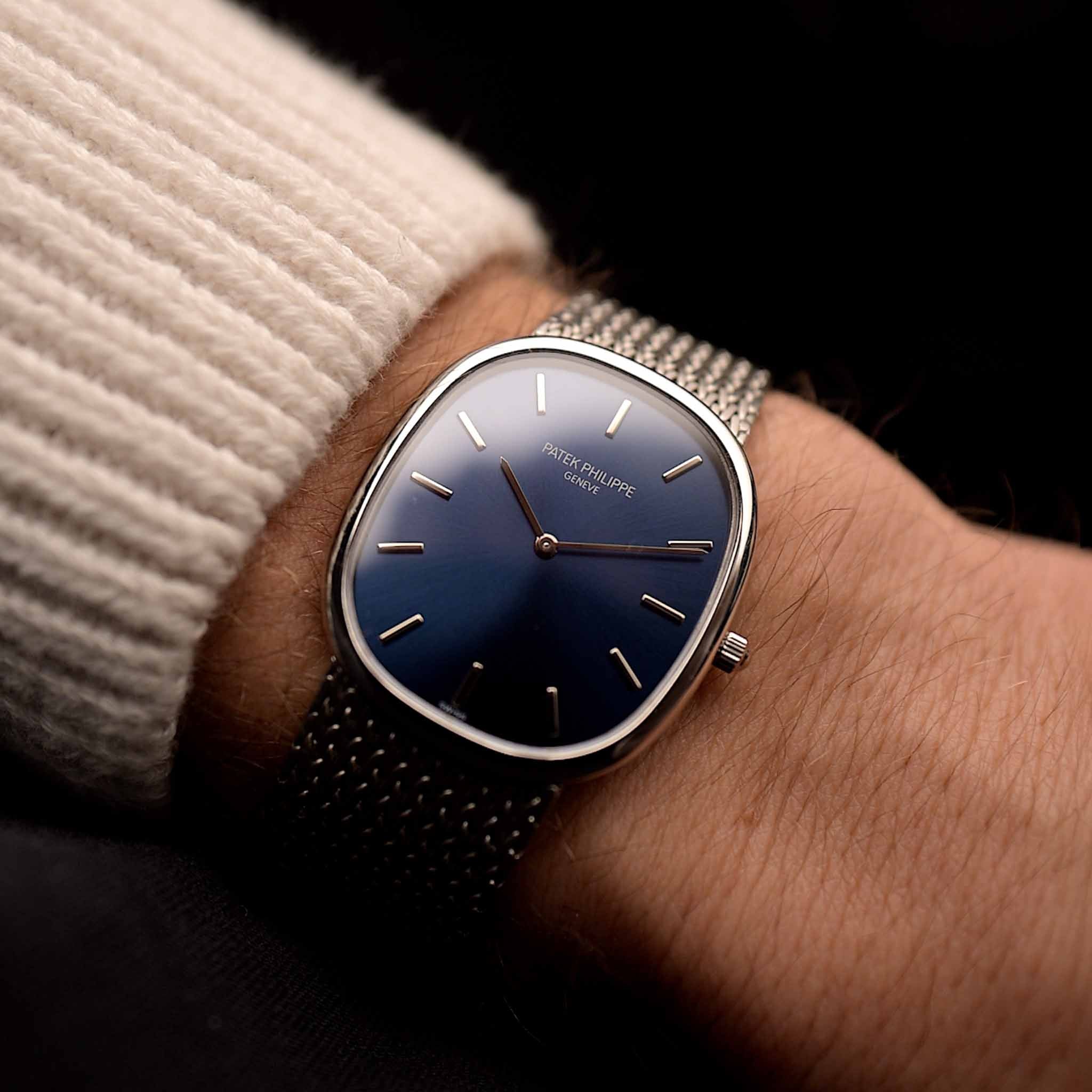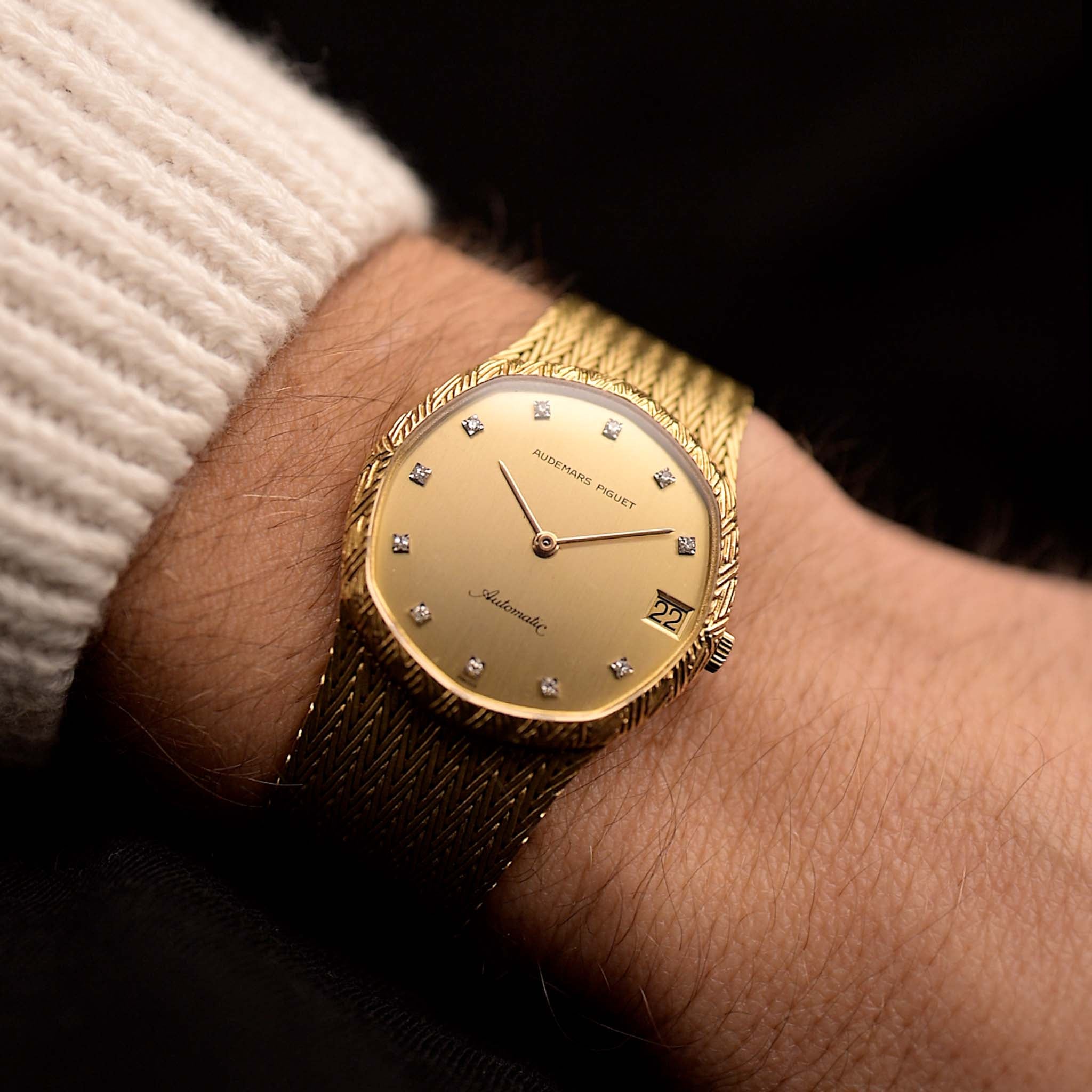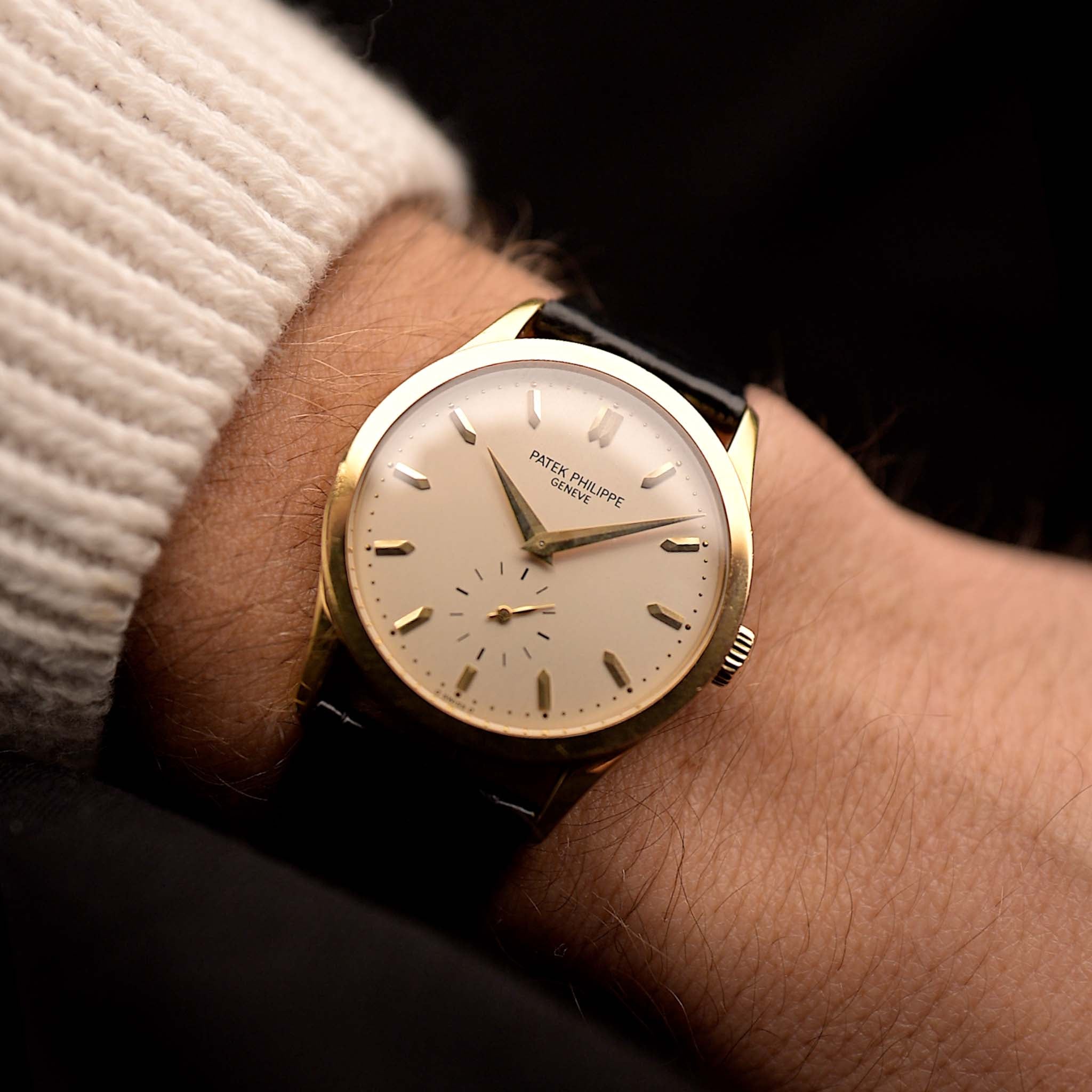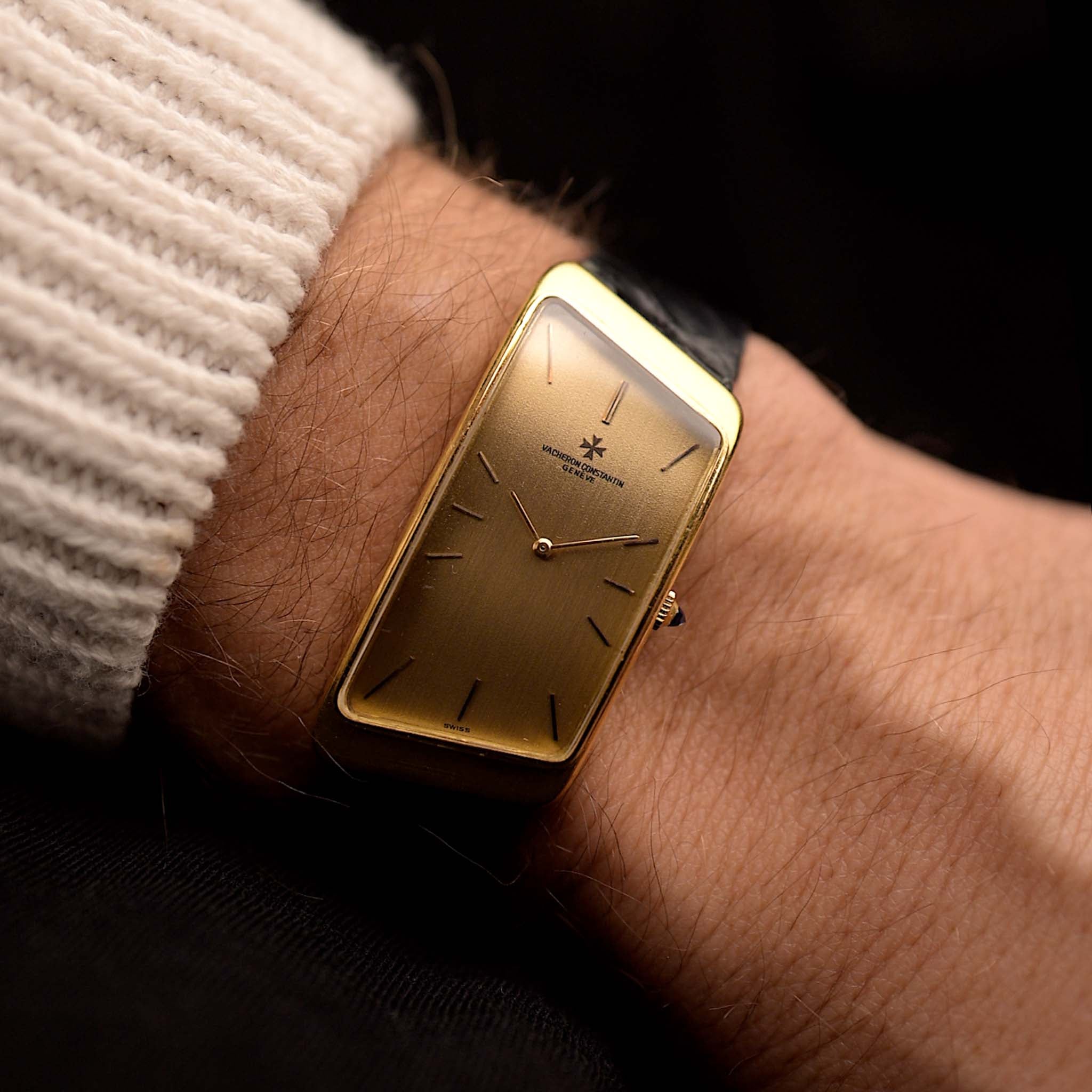We all know the Daytona... But let's talk experimentation! Rolex's goal throughout the 1960s and 70s was not to conceive a legend but to purely survive and establish itself within a highly competitive chronograph market. The sporty chronograph generally made a big splash but the brand most popular for utility driven, everyday un-complicated watches did not really get a foot in the door. So why is the Daytona the talk of the town today when it had to be sold with major discounts upon introduction and for several decades?
December 20, 2022
A Beginner's Guide to the early Rolex Daytona (1963-88)

Marcus Siems @siemswatches
Collector, Author, Data Analyst
The Rolex Daytona I probably already said enough. We all have some idea what this watch, this model means to the horological world and the brand of Rolex. But I want to give you a novel angle on these pieces. Let's talk experimentation! Trying out things with the clear goal not to conceive a legend but to purely survive in a highly competitive chronograph market throughout the 1960s, 70s and 80s was what actually fueled the development of this collection.
There are these things that simply became bigger than life itself. May it be a person, an event, or - as in our little part of the internet - a wristwatch. I'm hereby referring to the Rolex Daytona, arguably the hottest, hippest, and most hyped sport chronograph if not watch in general of our generation.
But what I immediately think about with any such symbol of the Zeitgeist: How did it get there? Particularly the Rolex Daytona was not exactly a customs pleaser from day 1. As lore tells us upon its introduction in 1963 the first Daytona ref. 6239 (and several to follow) were sitting on shelves waiting to be sold with a discount(!)[1-2].
 One of the pivotal points in Rolex history: the Rolex Daytona 6239 - The first watch that graced the 7 letters that make every watch collector listen up... And this particular specimen is a very special one as well. Not only was it part of the collection of the one and only Eric Clapton but also does it feature a stunning little detail: a pulsation scale on the dial, something virtually unheard of in the realm of the 6239 and Daytona at large. Photo Courtesy of Philips Geneva May 2022.
One of the pivotal points in Rolex history: the Rolex Daytona 6239 - The first watch that graced the 7 letters that make every watch collector listen up... And this particular specimen is a very special one as well. Not only was it part of the collection of the one and only Eric Clapton but also does it feature a stunning little detail: a pulsation scale on the dial, something virtually unheard of in the realm of the 6239 and Daytona at large. Photo Courtesy of Philips Geneva May 2022.
Definitely nothing you can compare to todays yearlong waiting lists for a new Daytona. And little interest in 1960s and 70s Daytonas (during the time of course) also kept the production quite limited. So now my question again... how did we end up where we are right now with this sports and racing chronograph legend? What did it take to go from the 1960s Daytona to the 2020s Daytona?
To answer this let's dive into the history of the Daytona. I want to present to you the models of the early years, the pre-Zenith Daytona era if you want. What dissociates these pieces from the Pre-Daytona chronographs of the past? (see also my Beginner's Guides on "Early Rolex Chronographs" and the Pre-Daytona series). This is not the first and probably also not the most exhaustive guide on the topic - others have championed that area already[3-5]. The focus here really is to investigate the design, the history and the production of the Daytona Experiment. That said: wherever I may have missed critical information please reach out.
1) The First Daytona Series - 6239 & 6240 (1963-69)
The basics. The first Daytona was introduced in 1963 under the reference 6239 utilizing the Valjoux 72 movement (Rolex 722). This reference was in production up until 1969. This means that the 6239 was up in Rolex boutiques the same time that other Pre-Daytona models (6238) were available... so what made the difference?
The difference. There are two main characteristics of the first Daytona that distinguishes it from all other Rolex pieces of the same age. First, the bezel features a tachymeter scale. Something otherwise unseen for Rolex and that shifts these timepieces into proper tool-watch territory. Second, it comes with contrasting sub-dials. This means that dial- and sub-dial color form something we typically refer to as "Panda" (black on silver) or "reverse Panda" (white on black) dial.
 Lineup of all major manually wound Rolex Daytona pieces: From earliest (6239, left) to latest (6265, right). Furthermore, find the metalic bezel models in the top and the acrylic counterparts in the bottom row, respectively.
Lineup of all major manually wound Rolex Daytona pieces: From earliest (6239, left) to latest (6265, right). Furthermore, find the metalic bezel models in the top and the acrylic counterparts in the bottom row, respectively.
The "Daytona". Interestingly, the very first 6239 didn't feature these 7 love letters on the dial just yet. The connection and branding with the Daytona motor races only came in the mid 1960s[5]. Interestingly, in the early years Rolex ads seem to even refer to these pieces as the "LeMans"[3]. However, every Daytona is actually officially a Rolex Cosmograph as written on the dial from the get-go. The "Daytona" comes at either the top right underneath the "Cosmograph" or wrapped around the 6o'clock sub-dial.
 That's what we all came here for: The Daytona. Daytona lettering right below the Cosmograph - a "floating" configuration. Photo Courtesy of Phillips Geneva Nov. 2017.
That's what we all came here for: The Daytona. Daytona lettering right below the Cosmograph - a "floating" configuration. Photo Courtesy of Phillips Geneva Nov. 2017.
The 6240. Rolex introduced their first update to the 6239 two years later in 1965. The 6240 featured two main changes to the original design. One, this one came with an acrylic bezel inset in black. Second, and potentially most importantly, the chronograph pushers could now be screwed-down as well. This makes the 6240 the first "real" Oyster chronograph by modern standards as it increased the depth rating to 100m - in comparison to the 50m of the 6239 and the Pre-Daytonas. Both references were in production until 1969.
 Comparing the 6239 (left) and the 6240 (right). We see that the bezel as well as the pusher clearly deviate. Photos Courtesy of Phillips.
Comparing the 6239 (left) and the 6240 (right). We see that the bezel as well as the pusher clearly deviate. Photos Courtesy of Phillips.
2) The Squeezed in - 6241 (1966-69)
The preferences. Even though from a modern perspective the screw-down pushers have been a game changer, not all Rolex customers felt the same at the time. Thus, just one year after the introduction of the 6240 - a screw-down pusher acrylic inlay Daytona - Rolex introduced yet another iteration with the 6241, this time with the classic pump-pushers. That is the only major change to the 6240, otherwise it is essentially the same watch.
The choices. Looking at the production habits Rolex seemed to really have been experimenting a lot during the 1960s. Only imagine: between 1966 and 1969 the Rolex catalogue featured the 6238 Pre-Daytona, a metal bezel 6239, and the acrylic bezel Daytonas with pump pushers (6241) and screw-down pushers (6240). It appears to be a winner-takes-all kinda strategy for Rolex, putting all the options out there and waiting which one brings the success the Swiss brand wants and needs for its chronograph lineup.
 Rolex's experimentation phase in full gear - the ref. 6241 is virtually the same watch as the 6240 introduced one year prior. Well... with that one exception that it comes with pump pushers. Photo Courtesy of Christie's Geneva Nov. 2022.
Rolex's experimentation phase in full gear - the ref. 6241 is virtually the same watch as the 6240 introduced one year prior. Well... with that one exception that it comes with pump pushers. Photo Courtesy of Christie's Geneva Nov. 2022.
3) The transitional series - 6262 & 6264 (1970-71)
The basics. From here on Rolex started to introduce metal (6262) and acrylic bezel (6264) references at the same time. This Daytona series or generation is defined by a movement upgrade. These pieces were powered by a Valjoux based Cal. 727, which basically increased the rate from 18,000 to 21,600 vph - or from 5Hz to 6Hz - and was meant to improve accuracy[6-7].
 The transitional beauty of the 6262... On the outside you won't see anything new. It's the heart that beats faster with this reference - a new caliber 727 is the reason to chang the reference number from 6239 to 6262. Photo Courtesy of Tropical Watch.
The transitional beauty of the 6262... On the outside you won't see anything new. It's the heart that beats faster with this reference - a new caliber 727 is the reason to chang the reference number from 6239 to 6262. Photo Courtesy of Tropical Watch.
The transition. Now the question is why do we call this series "transitional"? Well first of all as far as we know this these two references were only production for a year or two in the early 1970s. These pieces seem to have been bridging before the next big change. These references were introduced when Rolex already lead up to their next major improvement of the collection...
4) The third series - 6263 & 6265 (1971-88)
The result. By 1971 Rolex seemed to have been completed their Daytona experimentation phase and finally found their finished product - at least we might conclude this from the extended production run of about 17 years. The 6263 (acrylic bezel) and the 6265 (metal bezel) featured the same 727 movement as the transitional 6262 & 6264. But now what made the difference?
 The pusher makes the difference... and the Oyster. With the screw-down pushers these Daytonas (6263) are now by every aspect classic Oyster chronographs. Photo Courtesy of Phillips Geneva Nov. 2019
The pusher makes the difference... and the Oyster. With the screw-down pushers these Daytonas (6263) are now by every aspect classic Oyster chronographs. Photo Courtesy of Phillips Geneva Nov. 2019
The Oyster. Rolex reintroduced the screw-down pushers on their final manually wound Daytona iteration! The same feature that led to some criticism a good 5 years earlier was now the center-piece of the Rolex Daytona. Improved water-resistance seems to be the key for longterm success in a sport and racing fueled chronograph environment.
5) Production numbers
If we assume that all of this time Rolex has been experimenting what their best option on the chronograph market might be then we should see some of these trends in the production numbers, right?
 Figure 1. Historical Production Numbers of all vintage (4-digit/Pre-Zenith) Daytona models and the 6238 Pre-Daytona, spanning the production period from 1962 - 1988[10-16].
Figure 1. Historical Production Numbers of all vintage (4-digit/Pre-Zenith) Daytona models and the 6238 Pre-Daytona, spanning the production period from 1962 - 1988[10-16].
If we only focus on the 1960s models for a second - the 6238, 6239, 6240, and 6241 - we can already observe some interesting trends. First, the Daytona (6239) seems indeed to have been selling better than the Pre-Daytona (6238). With considerably similar production runs we see about a fourfold stronger production for the Daytona model. Second, metal bezels seem to have been selling a lot better than their acrylic bezel counterparts (about 3x). Third, screw-down pushers were really not as demanded. The 6240 (screw-down) sold only about half as many examples as the 6241 (pump pushers). Fourth, golden Daytonas seemed to have slightly more prevalent with acrylic bezel references.
 A rare and cool screw-down pusher Rolex 6240 from the 1960s... not really a bestseller by any means but highly collectable today. Photo Courtesy of Phillips.
A rare and cool screw-down pusher Rolex 6240 from the 1960s... not really a bestseller by any means but highly collectable today. Photo Courtesy of Phillips.
Let's spell it out at least once here: Rarity means these pieces have been relative flops while at production. For example particularly the 6240 Daytonas have been low in production because only very few people - at the time - found that the rather pricy chronograph complication in combination with the rather impractical pushers was worth spending money on. However, these pieces are highly attractive today and thus rarity becomes associated with value, opposite of what it originally was.
If we look closer at the transitional models (6262 & 6264) we see that even though they've been in production for only a year or two their overall output has been way above the approximate yearly production of any of the other references. Taken together we see that there must have been at least 6000 units been produced annually for the two. Before 1970 there have been about 3000 chronograph units been produced annually (also counting the 6238) and afterwards only a little over 1000.
 Transitional yet not as rare as you might think. These 6262 have been produced for a short time but with massive effort. Photo Courtesy of Phillips.
Transitional yet not as rare as you might think. These 6262 have been produced for a short time but with massive effort. Photo Courtesy of Phillips.
This means that the production period might have been short but the investment from Rolex into these pieces has been major. The exact reason is hard to tell. Did Rolex invest into new movements while at the same time they've had still too many older cases manufactured already? Did Rolex completely saturate the market with their huge output around 1970? Did they want to switch to screw-down pushers and tried to squeeze in as many pump-pusher chronographs right before they started production? But then another question occurs...
Why did Rolex invest so heavily into the screw-down pusher/fully water-resistant Oyster case 6263/6265 references at all? In the end, the screw-down pusher has never really been a customers favorite. Neither the 6240 nor the later executions did seem to have succeeded (all having annual production volumes way below other executions). Was it a try to implement a unique selling point in a highly competitive market?
 If you like 'em or not but these pushers do ooze the sporty vibe. Probably what Rolex had in mind and what customers thought of the time... yet not necessarily in that particular order. Photo Courtesy of Phillips.
If you like 'em or not but these pushers do ooze the sporty vibe. Probably what Rolex had in mind and what customers thought of the time... yet not necessarily in that particular order. Photo Courtesy of Phillips.
There obviously is a lot of speculation involved but we still need to discuss the numbers here. I'd argue what we see in the production from the 1970s onwards is that Rolex could not compete well in a market that has been dominated by several other Swiss brands, that they bet on an impractical detail (pusher) and held on to manually wound movements for too long. Gladly we collectors today all appreciate these features.
All of this of course changed with the end of an era when Rolex started producing their first automatic (Zenith-)Daytona models in the late 80s with the reference 16520 - utilizing the cal. 4030 with a lower rate for longer power reserve[7]. An immediate seller by the way during a time of renewal in Geneva[3].
 The story ends well when Rolex started to introduce these beauties... the 5-digit Daytona references seem to have been immediate bestsellers in the late 80s and 90s. Photo @goldammer.me.
The story ends well when Rolex started to introduce these beauties... the 5-digit Daytona references seem to have been immediate bestsellers in the late 80s and 90s. Photo @goldammer.me.
6) The Conclusion
We've touched a lot on the take-home message with the production numbers but let's sum up briefly up again. First, Rolex was highly invested in the chronograph market during the 1960s and 70s. At the time the brand was popular for their dive, travel and overall sturdy watches. But they couldn't really establish the same dominance in the chronograph sector.
Right after the first automatic chronographs were introduced in 1969[8-9] the Genevan brand tried to bring something new to the market as well. They could not deliver a competitive automatic movement just yet, so they started to upgrade on their existing Valjoux. But that wasn't the answer. Instead of going to an automatic movement themselves Rolex highlighted their "Oyster" cases with the (actually less favored) screw-down pushers and went forward with it.
 The great-grandfather of the 5-digit Rolex Daytona models: The Zenith El Primero A384 with the 3019 PHC high-frequency movement, introduced in 1969 as one of the first automatic chronograph watches. Photo Courtesy of Phillips.
The great-grandfather of the 5-digit Rolex Daytona models: The Zenith El Primero A384 with the 3019 PHC high-frequency movement, introduced in 1969 as one of the first automatic chronograph watches. Photo Courtesy of Phillips.
As a result Rolex didn't get a hold of the chronograph market until the late 1980s when they finally employed another third-party movement - the since 1969 available Zenith El Primero movement. So maybe the reason, or at least one of the reasons, we speak about the Daytona today is because it was such a flop? It generated rarity and unique features (pushers) that otherwise would likely have been copied by other brands. As much as I personally love the design of these early Daytonas it definitely makes for a curious case of an "icon".
Wanna know more about Rolex chronographs? Find all parts of the series here:
- Early Rolex Chronographs (1935-52)
- Rolex Pre-Daytona Chronographs (1950-69)
- Rolex Daytona 4-Digit (1963-88)
7) Appendix
Rolex 6269 - 1985-89 (30 examples, all YG), Brilliant-cut diamonds for the bezel, pave dial variant exists, Italian Watch Spotter & Amsterdam Vintage Watches.
Rolex 6270 - 1984-86 (8 examples, all YG), Baguette-cut diamonds for the bezel, pave dial variant exists, Italian Watch Spotter.
Paul Newman Daytona - refers to a particular dial design and not a dedicated reference (can be 6239, 6241, 6262, 6264, 6265, 6263 - most likely no(!) 6240s), so-called "exotic" dials (produced by Singer) come in black or white with contrasting outer rim and sub-dials. Markers are square, also within sub-dials, and sub-dial fonts are different to "normal" Daytonas[5].
 The most extravagant and at the same elusive Daytona 4-digit references: The 6269 (above) and the 6270. Complete with brilliant- or baguette-cut diamond bezel for the references, respectively. A treat for Middle-Eastern and hence Rolex Royalty. Photo Courtesy of Amsterdam Vintage Watches.
The most extravagant and at the same elusive Daytona 4-digit references: The 6269 (above) and the 6270. Complete with brilliant- or baguette-cut diamond bezel for the references, respectively. A treat for Middle-Eastern and hence Rolex Royalty. Photo Courtesy of Amsterdam Vintage Watches.
References
[1] Why Is The Rolex Daytona So Hard To Find; Paul Altieri, Bob's Watches;
https://www.bobswatches.com/rolex-blog/rolex-news/why-is-rolex-daytona-hard-to-find
[2] The Rolex Daytona Is Not Just A Hype Watch: It's An Icon; Malaika Crawford, High Snobiety;
https://www.highsnobiety.com/p/rolex-daytona-watch/
[3] Everything You Need To Know About The Rolex Daytona; Danny Milton, Hodinkee;
https://www.hodinkee.com/articles/understanding-the-rolex-non-paul-newman-daytona
[4] Complete Guide To 4-Digit Vintage Rolex Daytonas; Fabrizio Bonvicino, Italian Watch Spotter;
https://italianwatchspotter.com/vintage-rolex-daytona-guide/
[5] Reference Points: Understanding The Rolex Paul Newman Daytona; Benjamin Clymer, Hodinkee;
https://www.hodinkee.com/articles/reference-points-the-paul-newman-daytona
[6] Daytona Calibers; Episteme Daytona;
https://www.epistemedaytona.com/daytona-calibers
[7] Rolex Daytona Movements - A Complete Evolution Guide; Bob's Watches;
https://www.bobswatches.com/rolex/daytona/movements
[8] History of the Chronograph – The Watch that Stops; James Smith, Heddels;
https://www.heddels.com/2018/01/history-of-the-chronograph-2/
[9] The History of the Chronograph; Crown & Caliber;
https://blog.crownandcaliber.com/the-history-of-the-chronograph/
[10] Rolex ref. 6238; Dr. Crott Nov. 2022, The Watch Boutique & Bob's Watches
[11] Rolex ref. 6239; Episteme Daytona
[12] Rolex ref. 6240; Christie's HK May 2021
[13] Rolex ref. 6241; Episteme Daytona
[14] Rolex ref. 6262; Christie's NY June 2018 & Christie's Geneva Nov. 2013
[15] Rolex ref. 6264; Sotheby's Geneva Nov. 2020
[16] Rolex ref. 6263 & 6265; Christie's NY June 2022
And a special thank you to the almost limitless archives at Le Monde Edmond, the publications by John Goldberger and the Collector's Square.
All rights on text and graphics reserved to the Author.



























Leave a comment